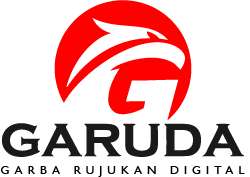Peningkatan Sifat Mekanik Material PLA+ Skin Karbon Menggunakan Proses Fused Deposition Modeling
Abstract
PLA+ banyak digunakan dalam proses Fused Deposition Modeling (FDM), tetapi memiliki beberapa keterbatasan terkait mechanical properties seperti kekuatan, keuletan, dan elastisitas. Untuk mengatasi kekurangan ini, ada kebutuhan untuk mengeksplorasi solusi berkelanjutan untuk meningkatkan kinerja material PLA+. Penelitian ini bertujuan untuk menyelidiki dampak karbon skin pada PLA+ untuk meningkatkan mechanical propertiesnya dalam aplikasi FDM. Pendekatan eksperimental melibatkan variasi penerapan komposit karbon pada PLA+ dengan membuat dua jenis spesimen: PLA+ karbon non skin dan PLA+ karbon skin. Spesimen dicetak menggunakan printer 3D Creality K1C dengan kepadatan pengisi 100%, sementara parameter proses lainnya, seperti kecepatan kipas, suhu pelat, dan kecepatan pencetakan, dijaga konstan. Setelah pencetakan, karbon skin diaplikasikan ke permukaan spesimen PLA+. Setiap variasi diuji dengan standar ASTM D638 tipe I. Hasil penelitian menunjukkan bahwa spesimen karbon skin PLA+ menunjukkan kekuatan dan kekakuan yang jauh lebih tinggi tetapi perpanjangan yang lebih rendah, menunjukkan perilaku yang lebih rapuh dibandingkan dengan karbon non skin PLA+. Temuan ini menunjukkan bahwa penggunaan komposit karbon dalam PLA+ dapat secara signifikan mempengaruhi mechanical propertiesnya, terutama meningkatkan kekuatan dan kekakuan sekaligus mengurangi keuletan.
Keywords
Full Text:
PDFReferences
Abd-El Nabi, A. M., Mahmoud, M. M., Marzouk, W. W., Omran, H. A., ElSheikh, A., Bedairi, B. H., & Mahmoud Ibrahim, A. M. (2023). Tension and bending behaviors of 3D printed PLA+ at different printing parameters. Journal of Micromechanics and Molecular Physics, 08(02n03), 123–135. https://doi.org/10.1142/S2424913023410047
Ahmad, M. N., Ishak, M. R., Mohammad Taha, M., Mustapha, F., & Leman, Z. (2023). A Review of Natural Fiber-Based Filaments for 3D Printing: Filament Fabrication and Characterization. Materials, 16(11). https://doi.org/10.3390/ma16114052
Aida, A. (2020). SINTESA MATERIAL BIOSCAFFOLD BERBAHAN DASAR PLA/NANOKITOSAN DENGAN PENAMBAHAN ZN-CURCUMIN. Journal of Science and Technology, 18.
Algarni, M., & Ghazali, S. (2021). Comparative Study of he Sensitivity of PLA, ABS, PEEK, and PETG’s Mechanical Properties to FDM Printing Process Parameters. Crystals, 11(8). https://doi.org/10.3390/cryst11080995
Casalini, T., Rossi, F., Castrovinci, A., & Perale, G. (2019). A Perspective on Polylactic Acid-Based Polymers Use for Nanoparticles Synthesis and Applications. Frontiers in Bioengineering and Biotechnology, 7(October), 1–16. https://doi.org/10.3389/fbioe.2019.00259
Cong Minh, T., Phat Tai, N., & Huu Tho, N. (2020). The effect of infill pattern, infill density, printing speed and temperature on the additive manufacturing process based on the FDM technology for the hook-shaped components. Jurnal Polimesin, 18(1), 1–6. http://dx.doi.org/10.30811/jpl.v18i1.1445
El-Sayegh, S., Romdhane, L., & Manjikian, S. (2020). A critical review of 3D printing in construction: Benefits, challenges, and risks. Archives of Civil and Mechanical Engineering, 20(2), 34. https://doi.org/10.1007/s43452-020-00038-w
Gokhare, V. G., Raut, D. N., & Shinde, D. K. (2017). A Review paper on 3D-Printing and Various Processes Used in the 3D-Printing. Interantional Journal of Scientific Research in Engineering and Management, 06(06), 953–958. https://doi.org/10.55041/ijsrem13278
Hidayanti, F. (2021). MATERIAL BIOKOMPOSIT.
Jiménez, M., Romero, L., Domínguez, I. A., Espinosa, M. D. M., & Domínguez, M. (2019). Additive Manufacturing Technologies: An Overview about 3D Printing Methods and Future Prospects. Complexity, 2019. https://doi.org/10.1155/2019/9656938
Kadhum, A. H., Al-Zubaidi, S., & Alkareem, S. S. A. (2023). Optimization of Mechanical Properties and Surface Characteristics of PLA+ 3D Printing Materials. International Journal of Chemical Engineering, 2023. https://doi.org/10.1155/2023/8887905
Kumar Panda, S., Charan Rath, K., Mishra, S., & Khang, A. (2023). Revolutionizing product development: The growing importance of 3D printing technology. Materials Today: Proceedings. https://doi.org/10.1016/j.matpr.2023.10.138
Madhu, N. R., Erfani, H., Jadoun, S., Amir, M., Thiagarajan, Y., & Chauhan, N. P. S. (2022). Fused deposition modelling approach using 3D printing and recycled industrial materials for a sustainable environment: A review. The International Journal of Advanced Manufacturing Technology, 122(5–6), 2125–2138. https://doi.org/10.1007/s00170-022-10048-y
Prashar, G., Vasudev, H., & Bhuddhi, D. (2023). Additive manufacturing: Expanding 3D printing horizon in industry 4.0. International Journal on Interactive Design and Manufacturing, 17(5), 2221–2235. https://doi.org/10.1007/s12008-022-00956-4
Rasyid, S., Nur, R., & Basongan, Y. (2022). Simulation and Experimental Evaluation of Tensile Properties and Macrostructure Changed of 3D printer PLA Filaments. Desiminating Information on the Research of Mechanical Engineering-Jurnal Polimesin, 20(2), 138–142. http://dx.doi.org/10.30811/jpl.v20i2.2929
Rayna, T., & Striukova, L. (2016). From rapid prototyping to home fabrication: How 3D printing is changing business model innovation. Technological Forecasting and Social Change, 102, 214–224. https://doi.org/10.1016/j.techfore.2015.07.023
Setiawan, F., Sofyan, R. M., & Putra, I. R. (2025). The effect of honeycomb and rectangular structures made with PLA 3D printing on the impact strength of sandwich composite. Disseminating Information on the Research of Mechanical Engineering - Jurnal Polimesin, 23(1), 77–82. https://doi.org/h//dx.doi.org/10.30811/jpl.v22i4.3713
Stecuła, B., Sitko, J., Stecuła, K., Witkowski, M., & Orzeł, B. (2024). Comparison of the strength of popular thermoplastic materials used in 3D printing—PLA, ABS and PET-G. Combustion Engines, 199(4), 97–103. https://doi.org/10.19206/ce-189386
Suteja, T. J., Handoko, R., & Soesanti, A. (2023). Optimization of Infill Density, Layer Height, and Shell Thickness to Achieve Maximum Bending Strength and Minimum Printing Time of PLA 3D Printed Part. Disseminating Information on the Research of Mechanical Engineering - Jurnal Polimesin, 21(5), 477–481. http://dx.doi.org/10.30811/jpl.v21i5.3883
Taib, N. A. A. B., Rahman, M. R., Huda, D., Kuok, K. K., Hamdan, S., Bakri, M. K. B., Julaihi, M. R. M. B., & Khan, A. (2023). A review on poly lactic acid (PLA) as a biodegradable polymer. In Polymer Bulletin (Vol. 80). Springer Berlin Heidelberg. https://doi.org/10.1007/s00289-022-04160-y
Tho, N. H., Dien, N. K., Tho, T. T., Thanh, N. V., & Duy, N. V. A. (2021). Application of topology optimization technique in sand casting process of a complex product based on FDM 3D printing technology. Jurnal Polimesin, 19, 122–132. https://doi.org/DOI: http://dx.doi.org/10.30811/jpl.v19i2.2115
Yan, C., Kleiner, C., Tabigue, A., Shah, V., Sacks, G., Shah, D., & DeStefano, V. (2024). PETG: Applications in Modern Medicine. Engineered Regeneration, 5(1), 45–55. https://doi.org/10.1016/j.engreg.2023.11.001
Yap, Y. L., Toh, W., Giam, A., Yong, F. R., Chan, K. I., Tay, J. W. S., Teong, S. S., Lin, R., & Ng, T. Y. (2023). Topology optimization and 3D printing of micro-drone: Numerical design with experimental testing. International Journal of Mechanical Sciences, 237, 107771. https://doi.org/10.1016/j.ijmecsci.2022.107771
DOI: https://doi.org/10.52447/jktm.v10i1.8262
Refbacks
- There are currently no refbacks.













